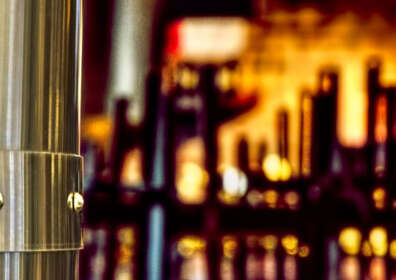Source: The Utah DABS has published the following information regarding the difference between bars and storage areas, which makes a difference on whether you have to have the Zion moat or not.
The definition of a “Dispensing Structure” is:
A surface or structure from which the product is dispensed or served (32B-1-102(35)) To “Dispense” includes the drawing of an alcoholic product and using it to mix or prepare an alcoholic product. All instruments or equipment used for dispensing are also included as part of the dispensing area. (32B-1-102(34))
Visibility of alcohol storage is NOT the issue; The visibility of dispensing alcohol is the Issue.
New Statutes in 2018 changed the laws regarding the dispensing structure vs storage of an alcohol product. If an area in the restaurant has alcohol storage areas which do NOT include dispensing, dispensing structures, instruments or equipment used for dispensing, then that storage area is allowed and may be visible to patrons.
Examples:
1. There is a cooler where sealed beer or wine containers are located at the cash register where a customer orders food and beverages. Servers take the order from the customer and the customer pays. The server then takes the sealed beer or wine out of the cooler and walks it to the person’s table to serve it. The beer or wine is never poured at the storage location and open containers of wine are never stored or brought back to the cooler.
This cooler is NOT considered a dispensing structure.
In this scenario, NO measurement for a dispensing area is required as this is considered a storage location only and NOT a dispensing area.
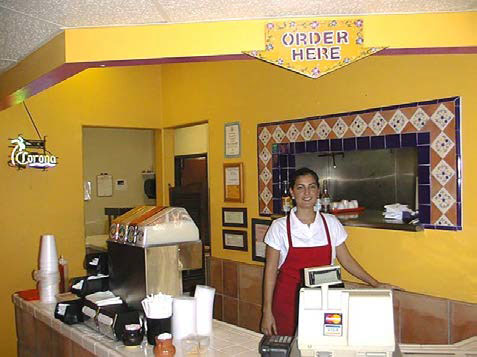
2. There is a beer or wine cooler located at the cash register where a customer orders food and beverages. Now change the facts to also include dispensing (pouring) of the beer or wine at the structure or counter, or if ANY open bottles of alcohol, including wine, are stored or returned to the cooler there.
The counter and cooler are, in this case, now part of a dispensing area.
In this second scenario, the front edge of the dispensing structure (bar/counter), will be measured either for the 10‘ buffer zone or 5’ out to a permanent pony wall or rail.
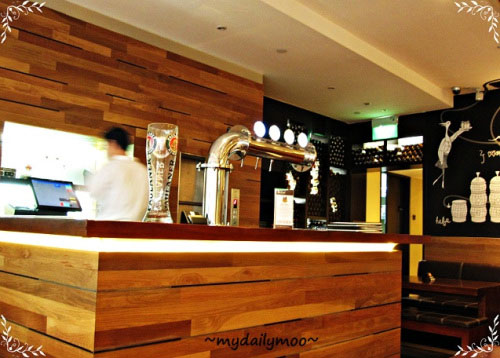
3. A third scenario; there is seating at a counter and a beer or wine cooler is located behind the counter where patrons are seated, or where any kind of alcohol is stored. The server draws the product from the cooler and serves it at the counter.
The entire bar, counter, alcohol storage and working inventory are, in this case, all part of a dispensing structure.
As in the second scenario, our measurements for the dispensing area would be to measure from the front edge of the bar/counter, either for the 10 feet buffer zone or to measure out 5 feet to a pony wall or rail.
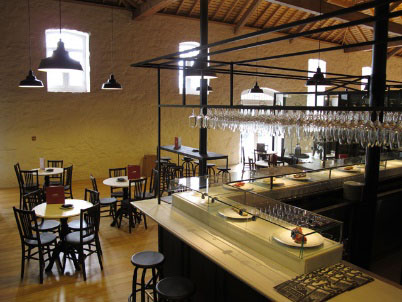
WINE STORAGE:
If a licensee has wine storage that is used for working inventory throughout the restaurant, HB442 would have made those storage areas “dispensing structures”. NOW, they are not – as long as wine is removed from that storage area and taken to and opened at a dispensing structure or another approved dispensing location.
Wine service can be provided as well, but the dispensing tools need to be stored at the dispensing structure, not at the storage area. Also, once alcohol has been opened it would need to remain in the dispensing area and not taken back to the storage area.
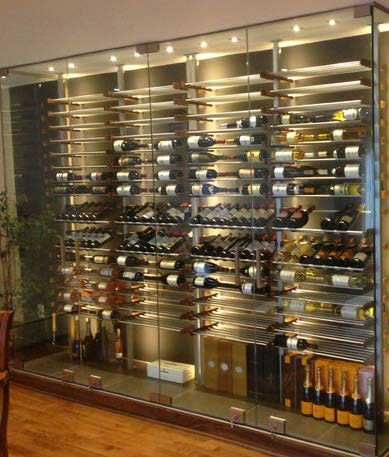
Visible storage (lockable) is ok as long as all alcohol stored there is first removed and opened at an approved dispensing structure or a backroom dispensing location.
Download the PDF here. Dispensing and Storage of Alcohol


